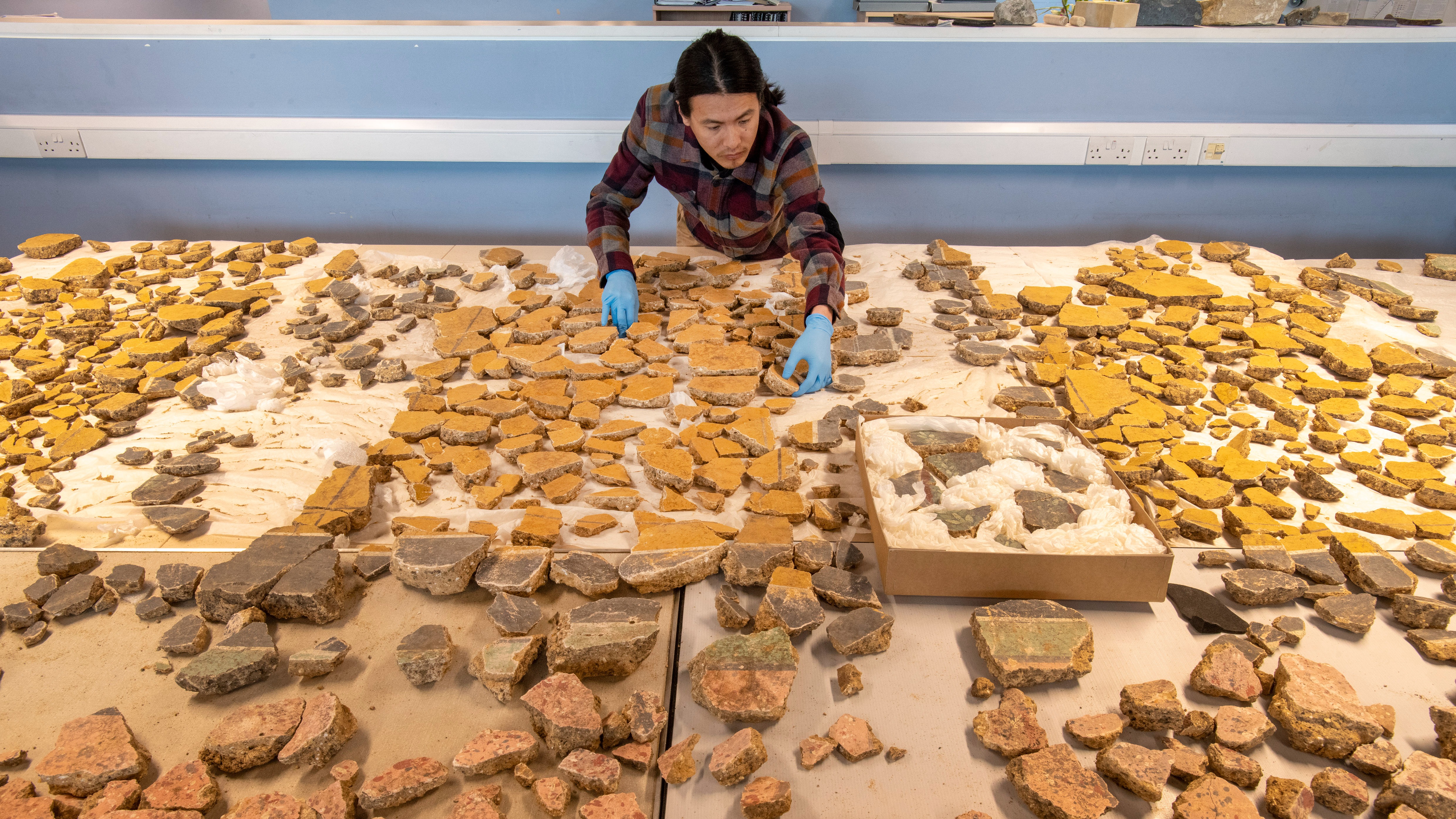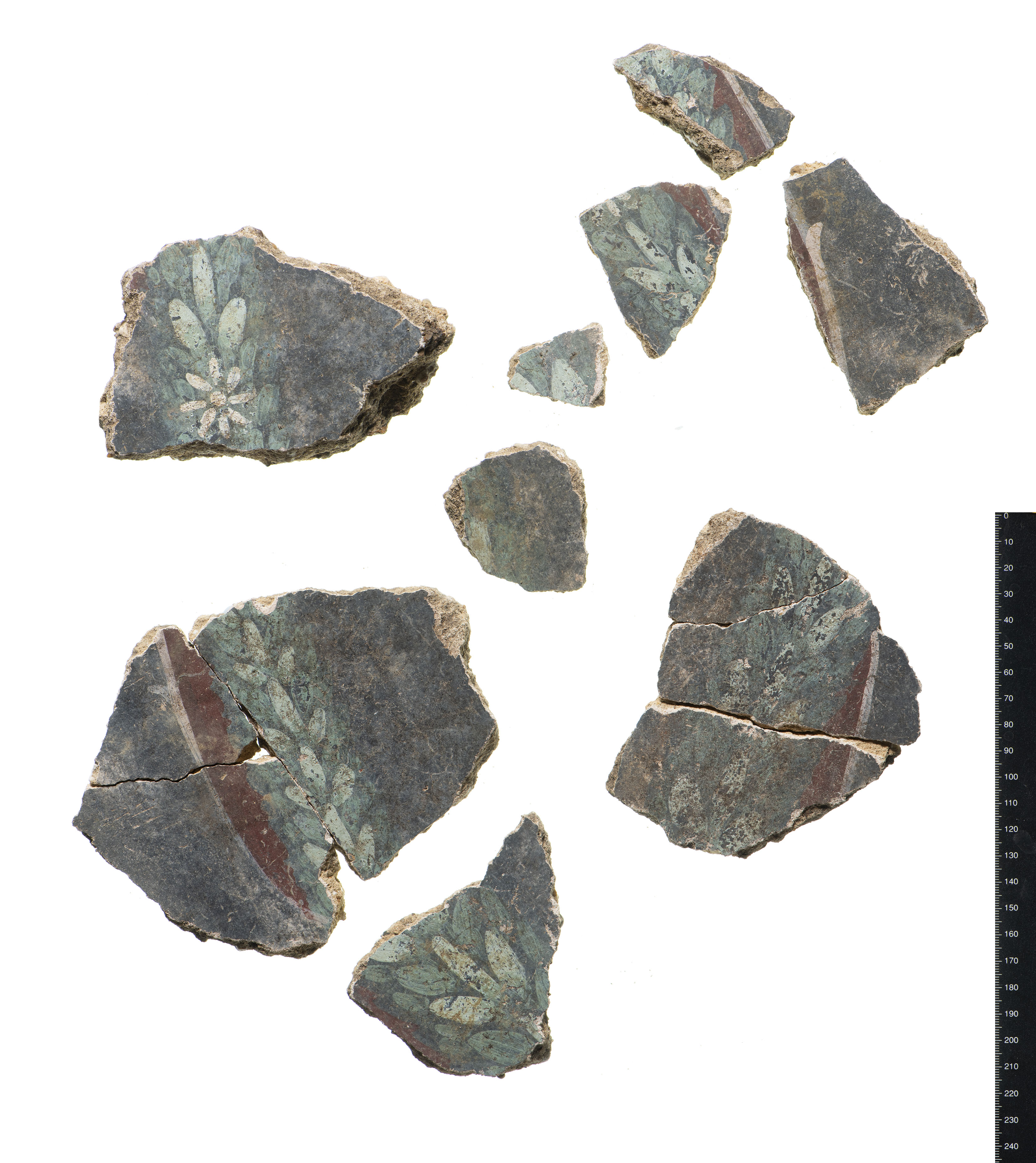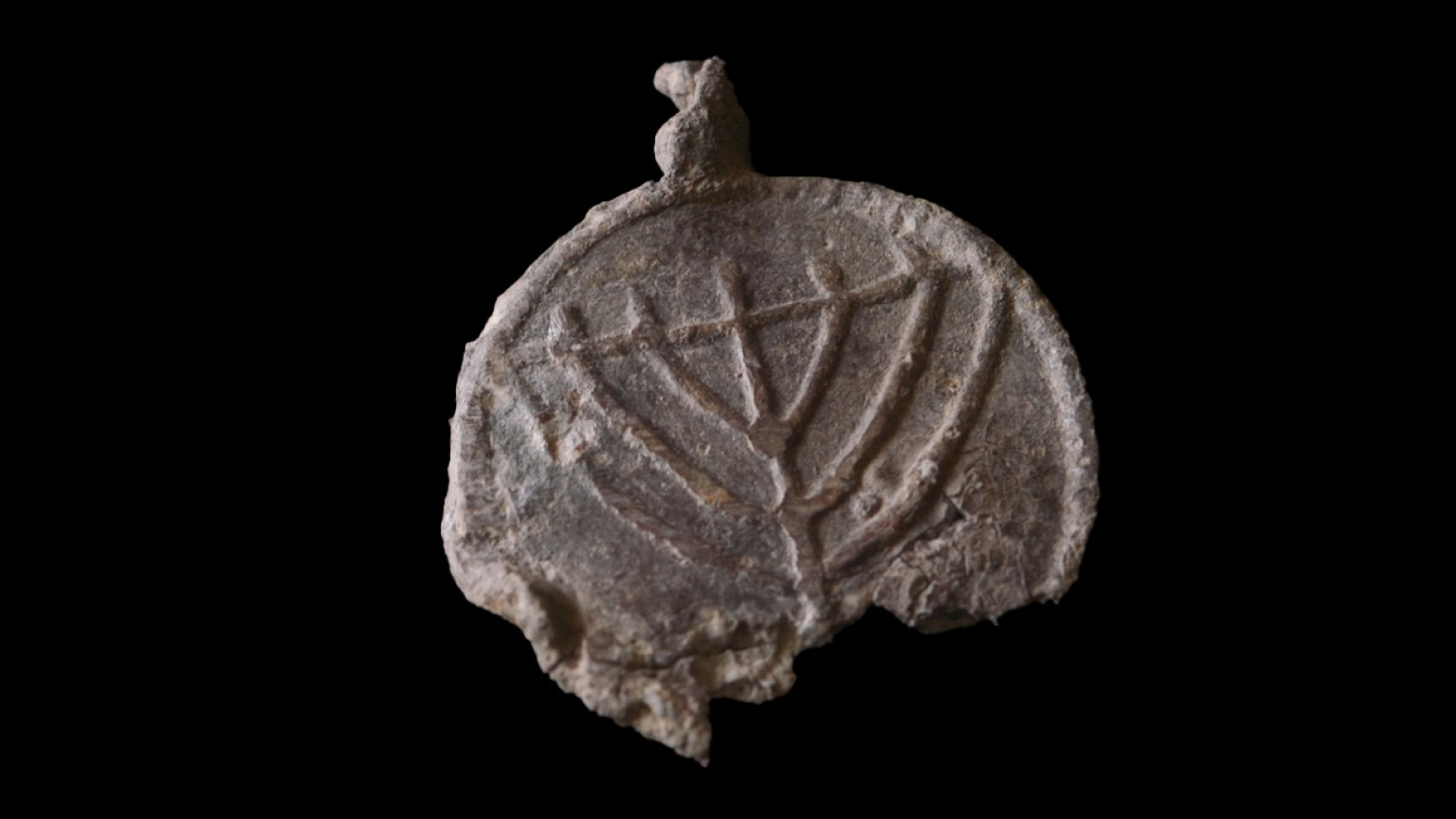'World's most difficult jigsaw puzzle': Archaeologists piece together thousands of shattered fresco blocks from ancient Roman villa
Archaeologists found thousands of pieces of an ancient Roman painting, which features intricate designs and ancient graffiti.

Archaeologists in London have painstakingly pieced together thousands of fragments of an ancient Roman fresco that has not been seen for 1,800 years.
"It was like assembling the world's most difficult jigsaw puzzle," Han Li, a senior building material specialist at the Museum of London Archaeology, said in a statement.
After three months of hard work, the fresco (a painting on plaster) from Roman Britain was back in its original arrangement. It reveals intricate depictions of birds, fruit, flowers and lyres, as well as ancient graffiti and a link to its artist.
Finding the fresco
The shattered plaster pieces were discovered in 2021 in a large pit in the Southwark district of London during redevelopment of the site, according to the BBC.
The fresco adorned 20 walls of a building constructed between A.D. 43 and 150. The excavation team blames the destruction of the villa, which happened within 157 years of its construction, for the dilapidated state of the painting.
Piecing it together
Li was nervous and excited to start the assembly process. "Many of the fragments were very delicate and pieces from different walls had been jumbled together," he said.
Get the world’s most fascinating discoveries delivered straight to your inbox.

The art served to demonstrate the wealth and taste of the villa's inhabitants. The painters of the masterpiece seem to have been inspired by aesthetics far across the area of Roman influence, emulating designs from what are now Germany and France, according to the statement. Parts of the fresco display a pattern of rectangular panels, which was common for the period, but the yellow color of the pattern is rare.
The Greek alphabet is etched into the plaster as ancient graffiti. Similar findings in Italy point to the alphabet as a checklist or tally, and the quality of the writing suggests the graffiti artist was an experienced writer, the statement reported.
The fragments also contain a hint about the fresco's artists. The Latin word "fecit" — which means "has made this" — is identifiable and framed by a decorative carving that Romans used when signing artwork. Much to Li's chagrin, though, the plaster is broken in the spot where a signature would be, so the artists remain a mystery.
Li also found faintly drawn painter's guidelines that are visible only under certain light. Faint sketches of a flower within a circle can be recognized, but "the painters likely changed their mind and chose not to paint it," Li said in the statement.
Many questions about the fresco remain unanswered, including the purpose of the Roman-era building it decorated. But it could have been a commercial property, "perhaps relating to the storage or distribution of storage jars and vessels, brought to London by ship from the wider Roman Empire," the statement reported.
Roman emperor quiz: Test your knowledge on the rulers of the ancient empire

Perri Thaler is an intern at Live Science. Her beats include space, tech and the physical sciences, but she also enjoys digging into other topics, like renewable energy and climate change. Perri studied astronomy and economics at Cornell University before working in policy and tech at NASA, and then researching paleomagnetism at Harvard University. She's now working toward a master's degree in journalism at New York University and her work has appeared on ScienceLine, Space.com and Eos.
You must confirm your public display name before commenting
Please logout and then login again, you will then be prompted to enter your display name.


